Why The 4C Will Make A New Generation Of Petrolheads Fall In Love With Alfa Romeo
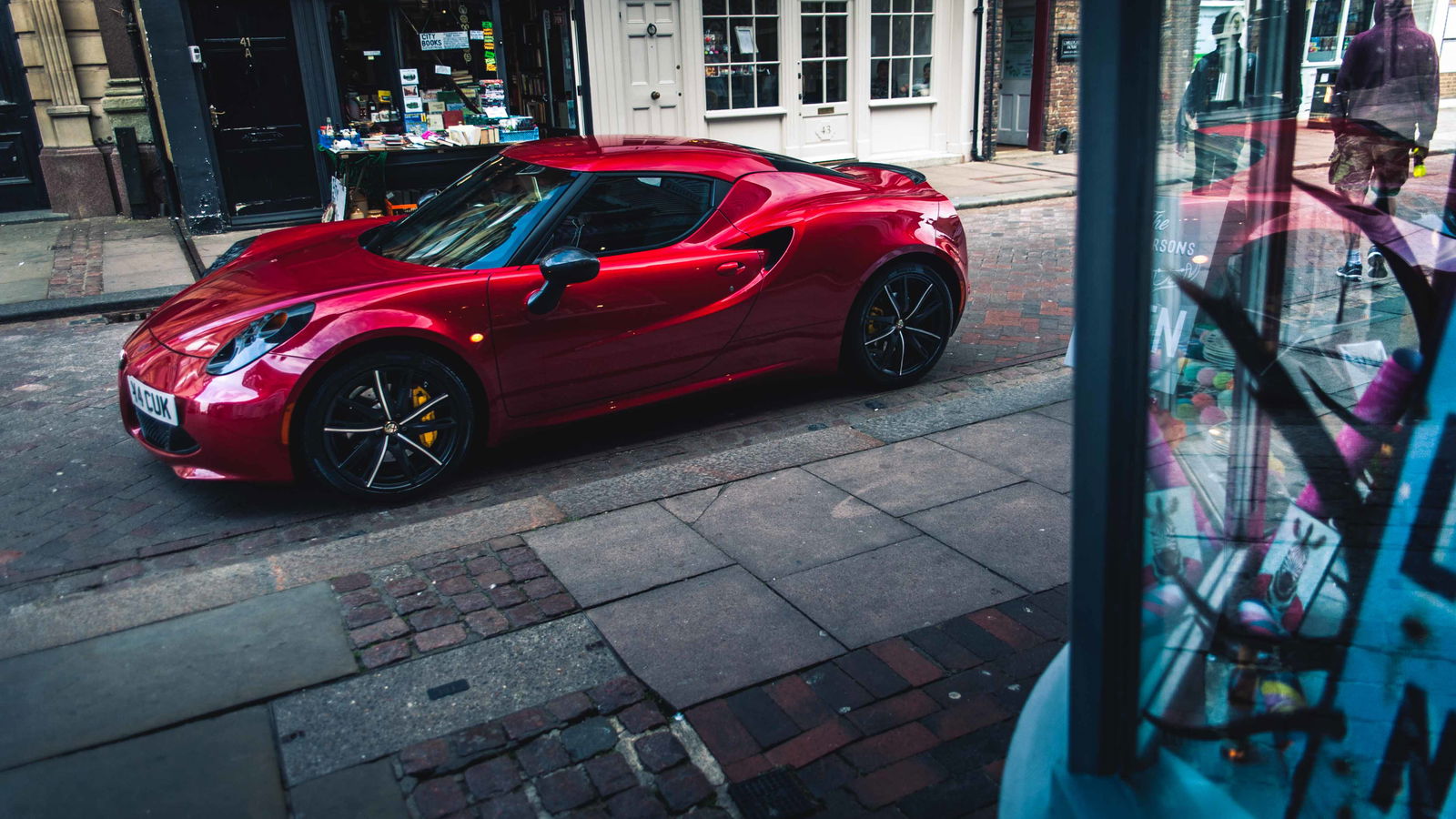
One of my favourite roads is the A283 that runs from Milford, just south of London, to the historic village of Petworth near the south coast. It’s a winding ribbon of forest-lined tarmac, intertwined with chocolate box villages whose residents aren’t particularly appreciative of the highly strung serenity-shattering performance engines that are attracted by this sort of road. The broken, undulating blacktop and off-camber corners are so inviting because they’re challenging but flowing, and it’s here the 4C feels at home. It’s here, that I finally get it.
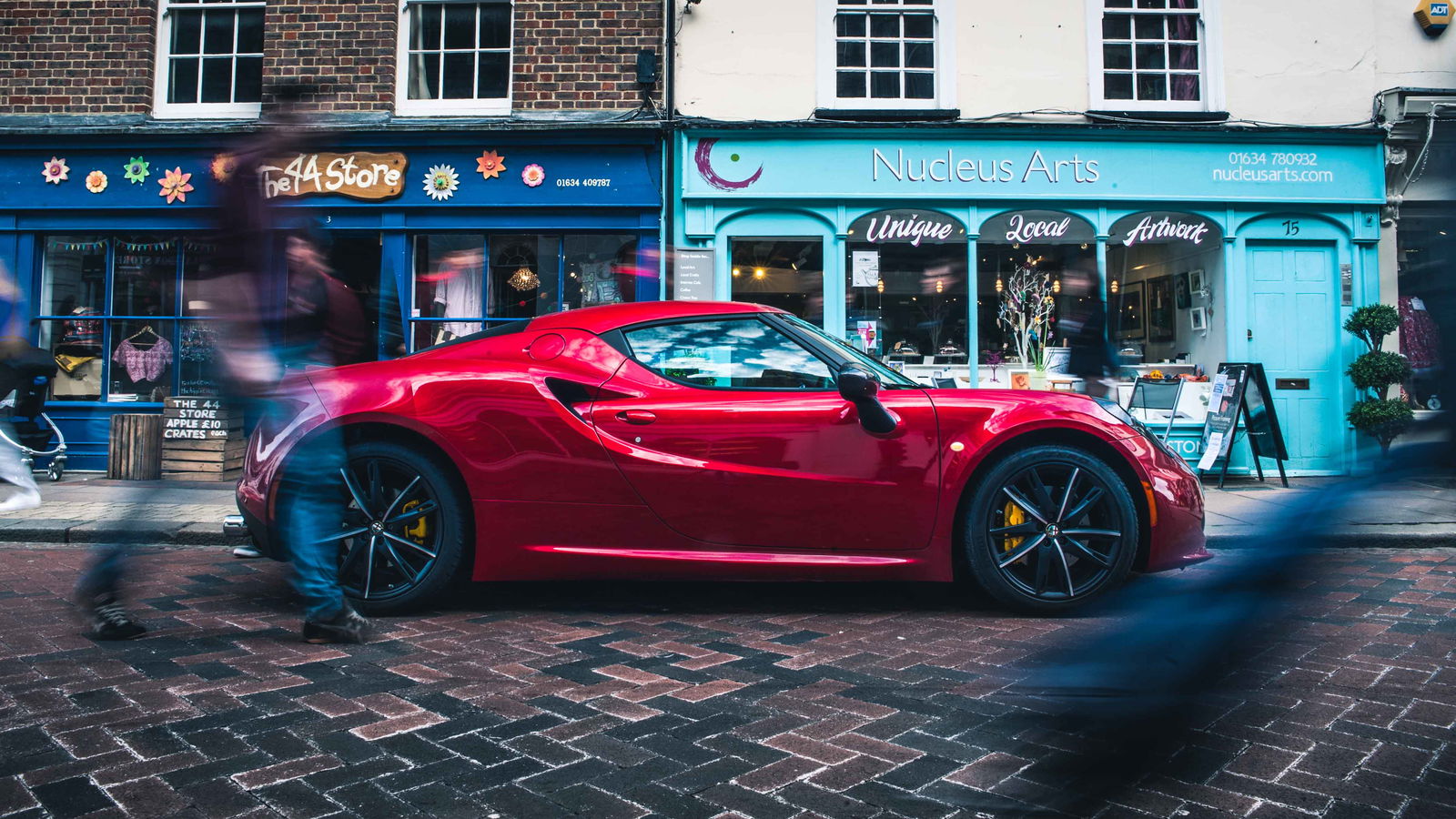
I’m going to be blunt: the Alfa Romeo 4C is not an easy to car to love. It’s easy to lust after, but this is a relationship that requires effort for its reward… but my word, is the reward worth it. Growing up we’ve been told you’re not a real petrolhead until you’ve owned an Alfa. I’m sorry, but that’s just nonsense. For our parents and their parents before them, Alfa has a racing romanticism, but for us, a string of faintly boring, uncharismatic econoboxes have done nothing to stir our souls.
And then we get to the real crux of the 4C’s problem, which is that it’s far from a good car. And as much as Alfa may argue, the Porsche Cayman is a rival. By almost every objective observation, the Italian falls short compared to the German. In my many chats with Alfa in the build up to borrowing this car, I’ve had the idea that the 4C is not a Cayman rival subtly, but repeatedly, dropped into the conversation. “It’s not as good as a Cayman, but it’s not meant to be” might be a cruelly over-simplified paraphrasing of the message, but that’s exactly how it came across.

Now as much as I prefer to stick a middle finger up at PR shenanigans, I’ve got to admit that comparing the Cayman and 4C really is pointless. They might both be small sports cars, but they go about achieving their goals in different ways, and they target a very different cross section of the market.
Never before have I driven a car with such a complex character to unlock, just like the cars the old boys fell in love with all those years ago. Modern petrolheads often clamour for the simplicity of older cars, and pine for the days when sporty machinery wasn’t easy to get to grips with. In my mind, the 4C is the car that bridges the gap between modern technology and classic driving characteristics.
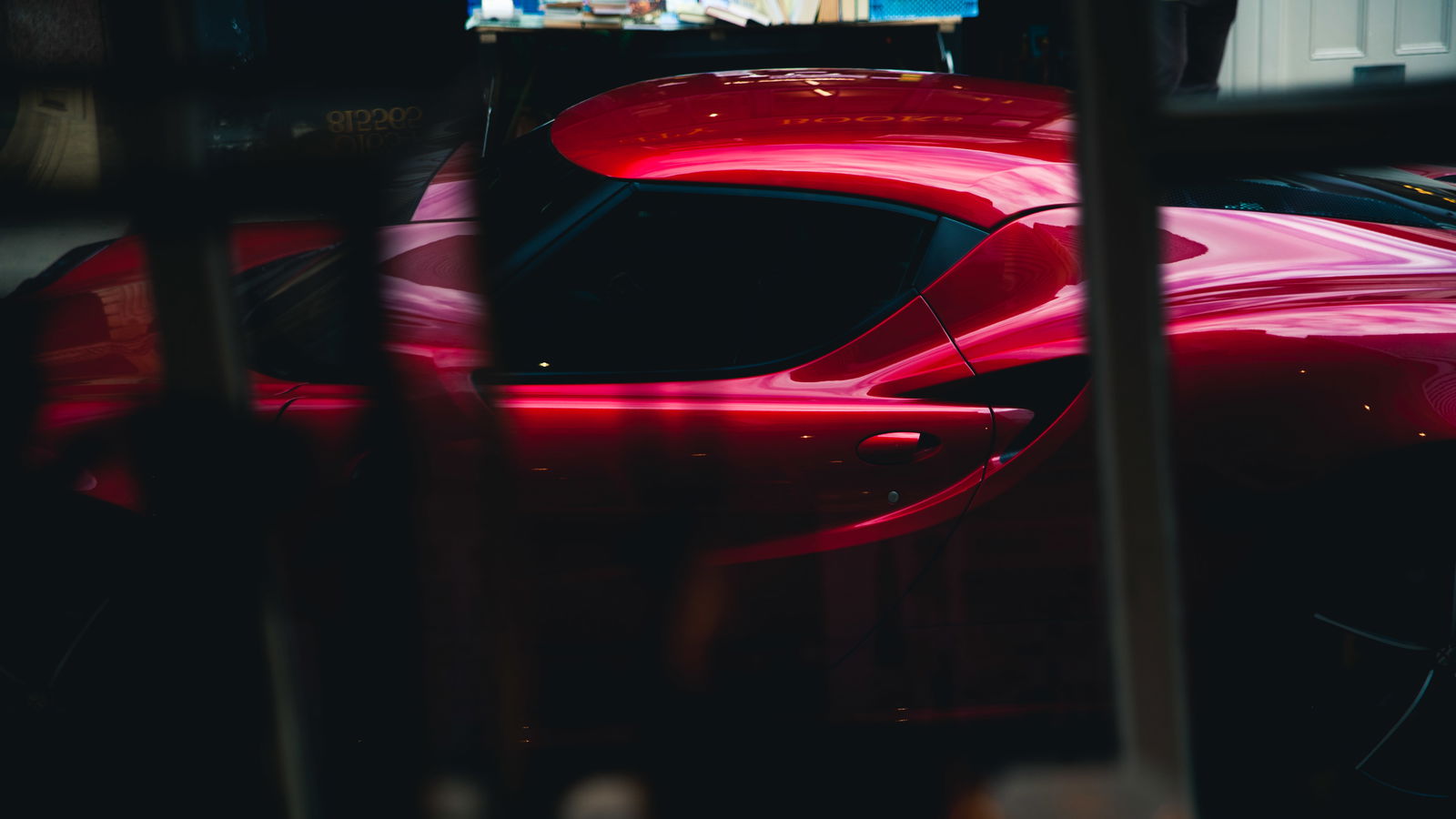
It all began with a small vehicle transporter arriving outside my flat, which opened to reveal that utterly gorgeous design. The deep slats in the bonnet that converge at the base of the front bumper, encompassing the iconic Alfa Romeo grille; the ridge on each door that sweeps upwards like an artistic flourish, seamlessly incorporating the engine’s air intakes and blending into the high hipline at the rear; even the carbonfibre wingmirrors that sit perched on the door. From every angle, this is Italian flair at its finest.
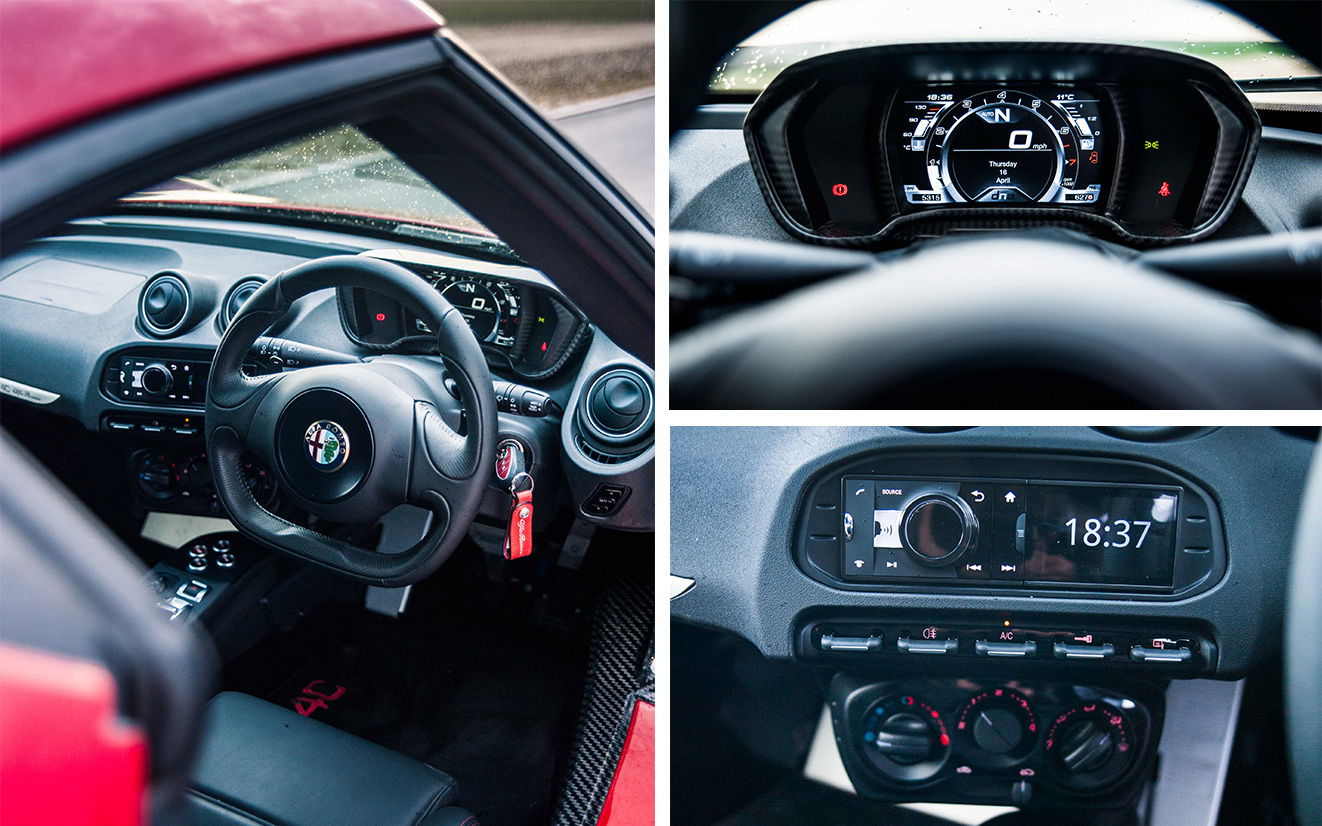
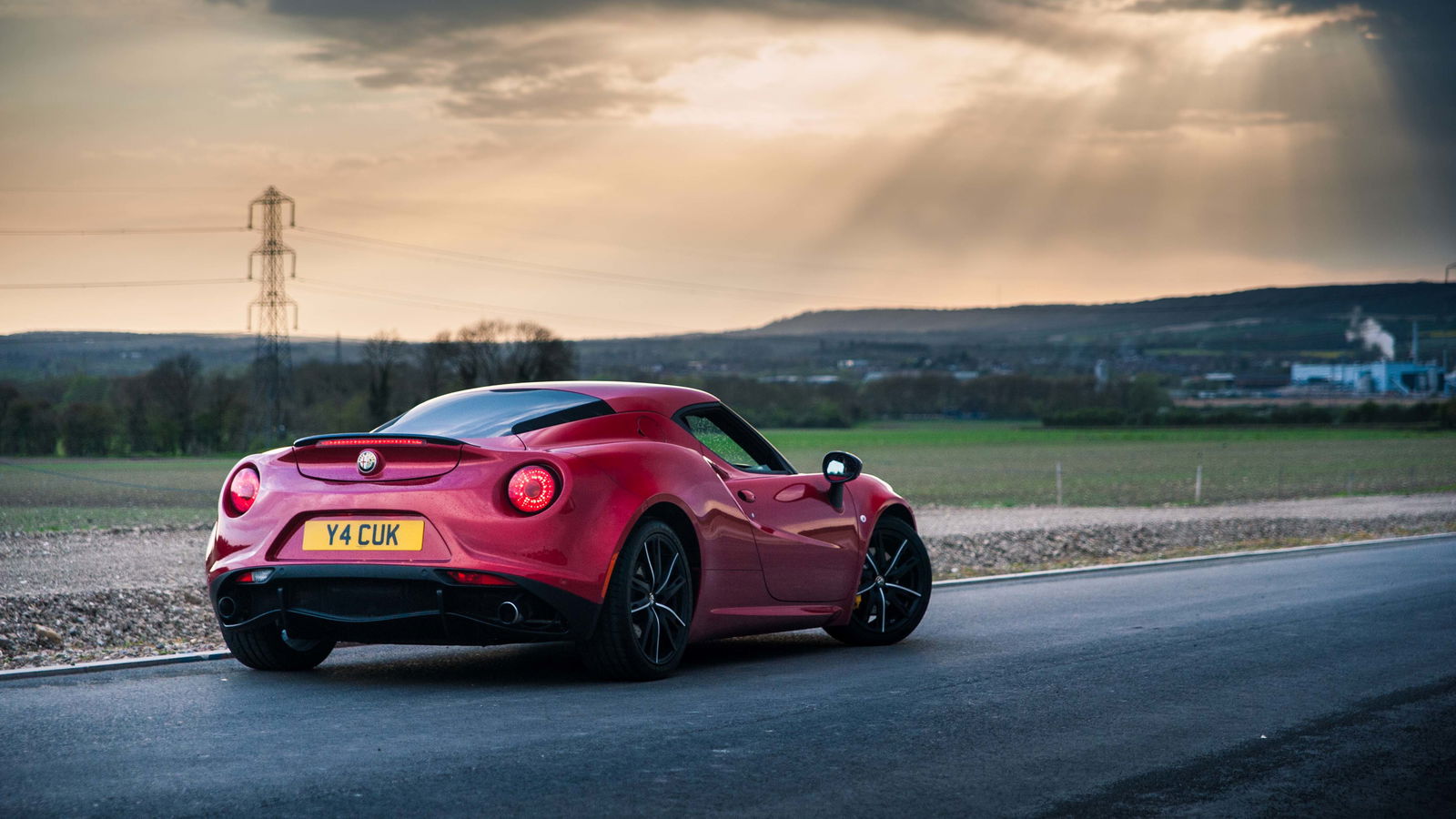
I climbed across the thick sill and dropped into the cabin, the exposed carbonfibre provocatively displaying what hides beneath: a carbonfibre tub, as you’d get in something exotic (with an exotic price tag to match) like a McLaren 650S. The Alfa is the least expensive car to have one. You sit low, very low, and look up at the world, cocooned in what is, quite frankly, one of the worst interiors of any modern car. The seats are thin, uncomfortable and don’t make up for that with adequate lateral support, the steering wheel is possibly the blandest design I’ve ever had the displeasure of gawping at, and the sound system is a Parrot product, which is slow and cumbersome and just looks cheap and nasty.
On tight, twisty switchbacks, the short wheelbase and unpredictable power delivery hand out moments where you could cut a cigar between my cheeks.
When you turn the key, the instrument binnacle lights up, displaying the brilliant TFT screen which houses all the usual information like speed, revs, fuel and all the other gubbins usually found between the wheel and the windscreen. Having pushed your foot firmly on the brake to allow the engine to fire to life, you’ll have noticed the pedals are offset slightly. Old school cool?
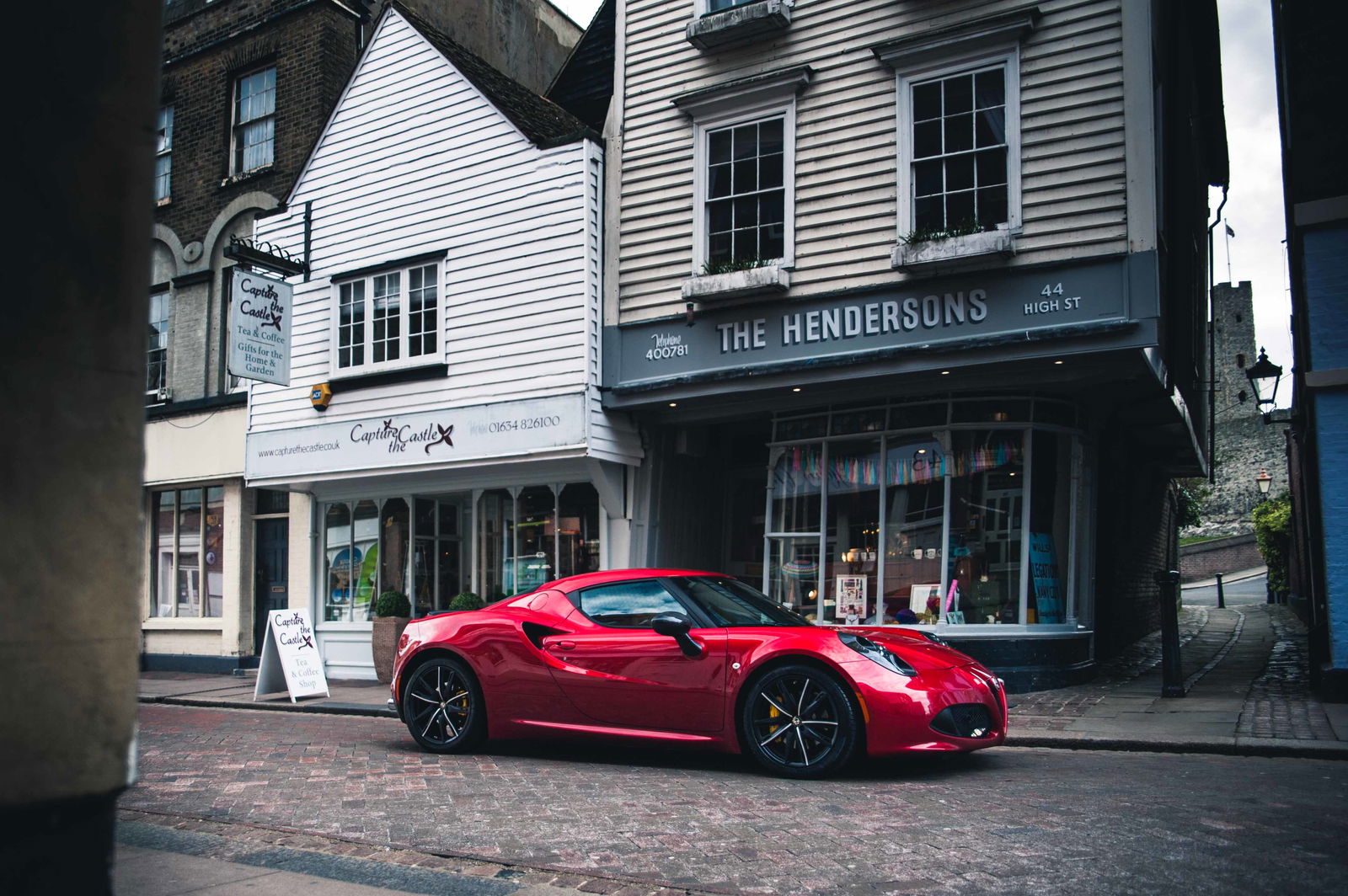
Press the centrally-mounted gear select button marked ‘D’, lift the brake, and press the right pedal firmly to go - the first couple of inches of throttle are dead, so smoothly accelerating away becomes an art form to be mastered. Over your shoulder sits a 1.75-litre four-cylinder engine, which makes just 240bhp - even the lowliest Cayman, which costs £6k less, has more power than that - and as it chugs along at slow speeds you’ll be wondering where that Italian flair is hiding. There isn’t any power steering, and at single digit speeds with wide tyres, turning into and out of junctions takes a discernible effort.
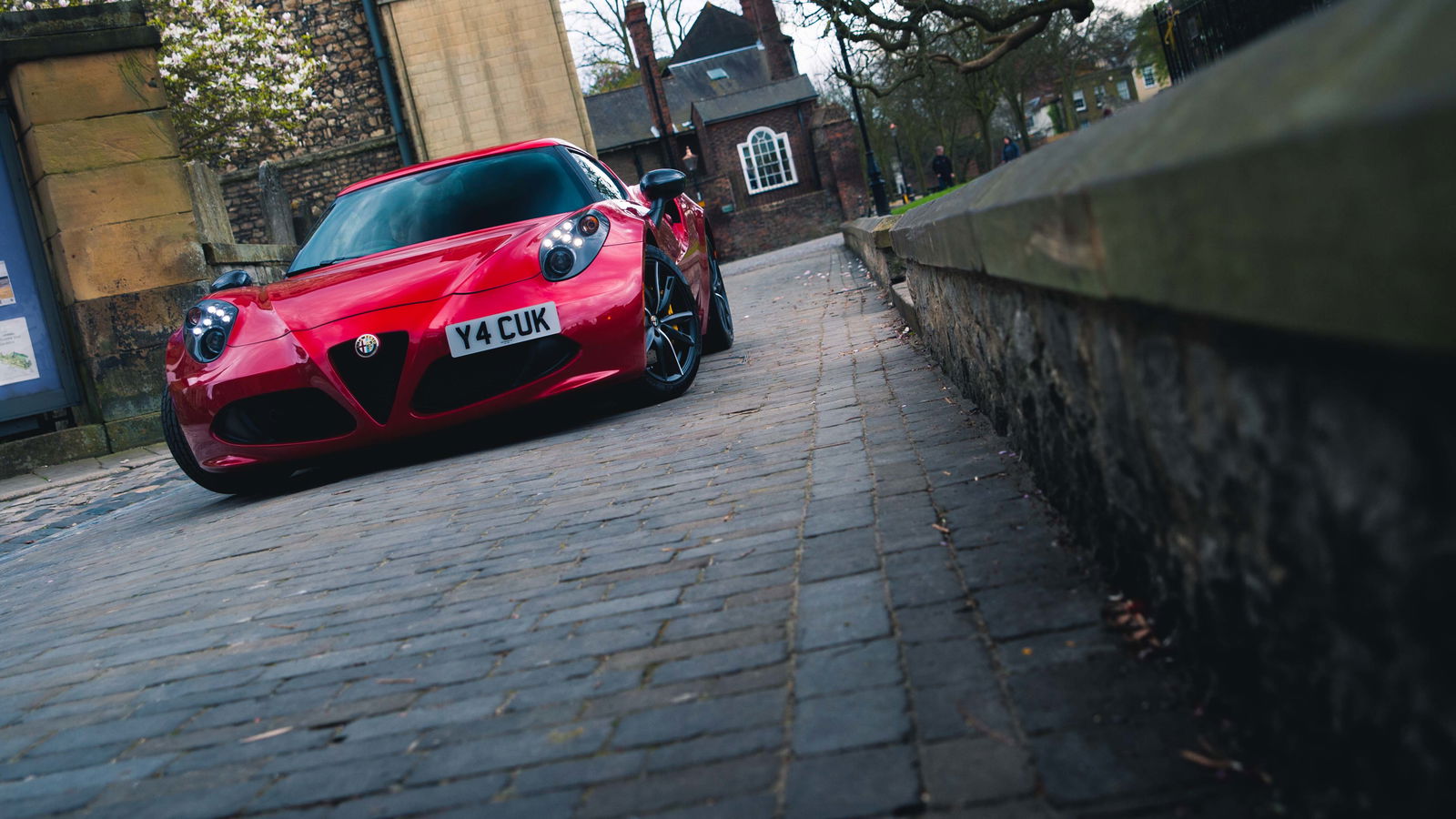
And then you escape suburbia and find yourself pulling onto the A283, so you flick the car into ‘Dynamic’ mode, and everything comes alive. That dead zone in the throttle disappears, and the chattering engine wakes up. Mash the throttle against the exposed carbonfibre tub and you surge forward; that relatively low power output makes sense once you’re pressing on, as the car’s such a lightweight. The engine doesn’t suddenly wail like a Ferrari - this is just a four-pot after all - but instead begins sucking huge gulps of air into the beautifully crafted intakes that sit right beside your ear. The sound of the atmosphere getting vacuumed into the engine before the turbo slams it into the combustion chamber becomes dominant. It sounds like a jet.
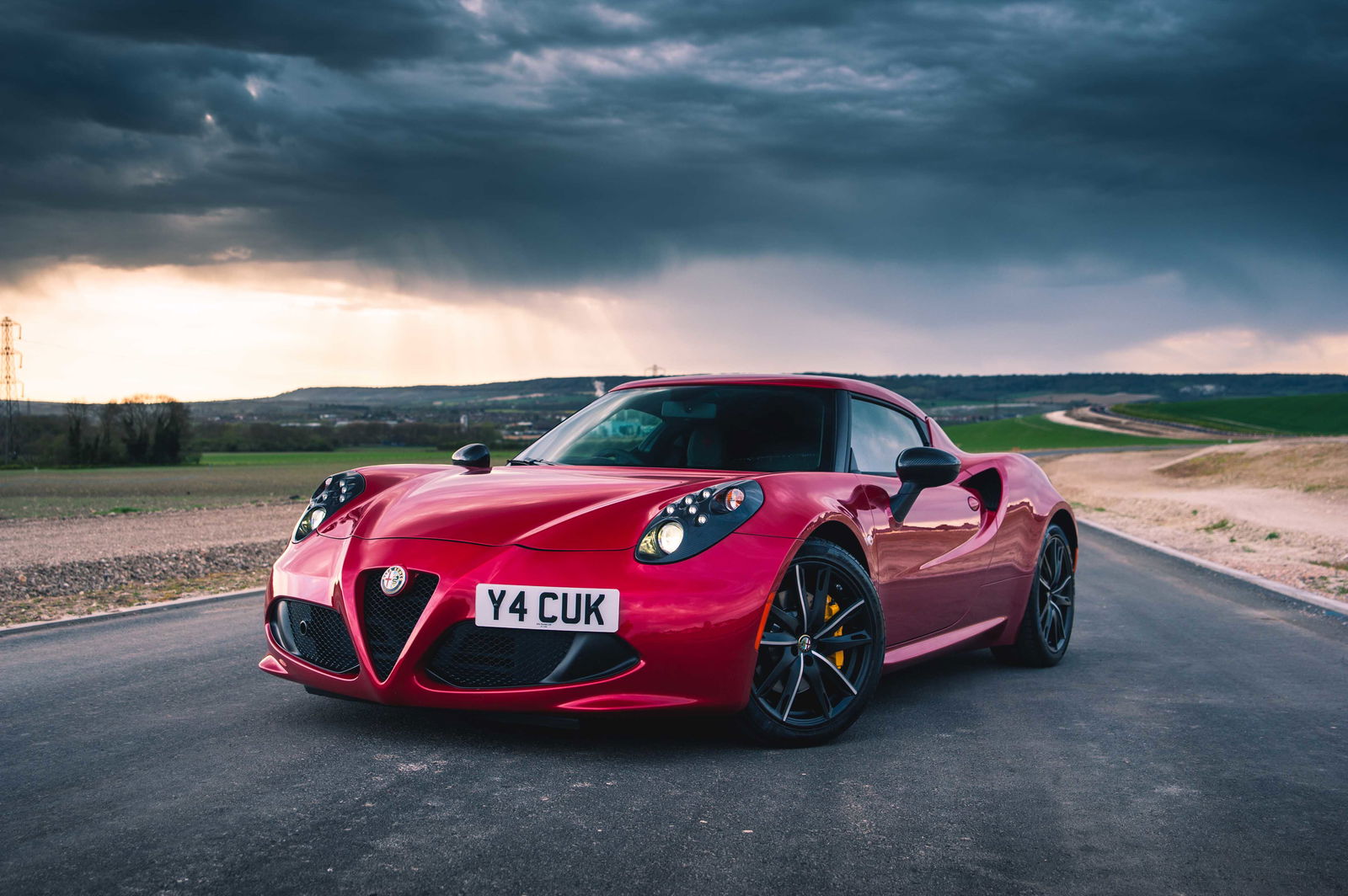
On sections of road that have been ravaged by winter, the 4C is tugged and pulled from side to side. It’s wholly disconcerting at times, and certainly isn’t for everyone, but as a package it’s so exciting I couldn’t care less. Here, where tenths of a second are irrelevant, the 4C makes sense. On tight, twisty switchbacks, the short wheelbase and unpredictable power delivery hand out moments where you could cut a cigar between my cheeks, but you learn to live within its limitations and just enjoy the ride.
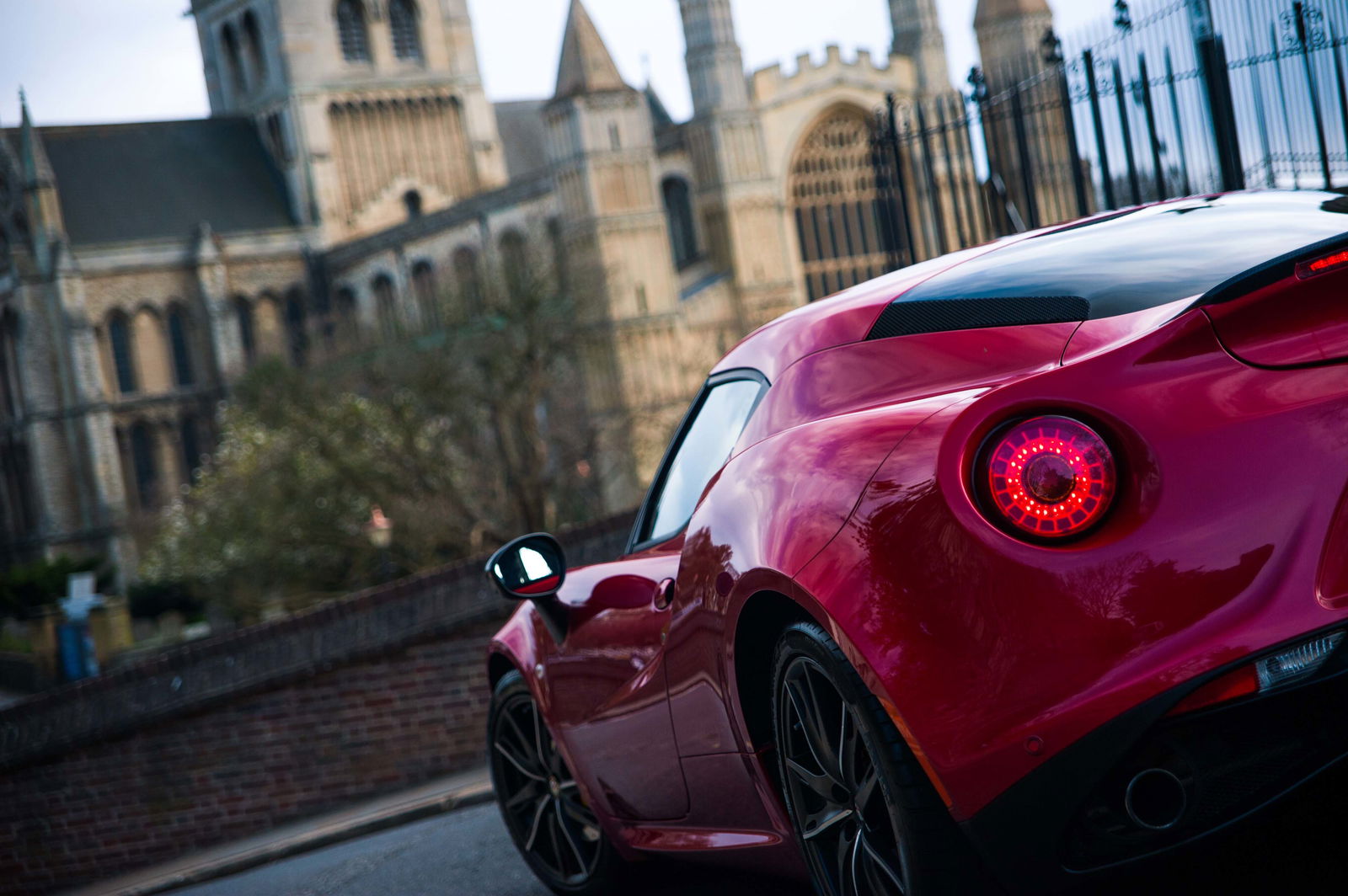
However, where the little Alfa shines is in the sweeping corners, like those you’ll find north of Petworth. Dabble with the limit without getting too close, and you’ll get the most from this unashamed throwback. My only gripe is the dual-clutch automatic transmission - there’s barely a perceptible shift as the car shoves its way to the top of the ‘box. In an ‘emotional’ car like this, a slower, more obvious change would suit its character, or better yet, a manual.
After we’d finished shooting, photographer Jayson jumped in the 4C’s passenger seat and directed me back home. The scenic route, naturally..
As the sun set and cast golden light on the fields blurring past the window, we cut through the long evening shadows giggling like schoolchildren. We weren’t going particularly quick - though the local constabulary might have disagreed - and we never got close to breaking traction, but we were having the time of our lives. It’s one of those drives that sticks with you: great car, great scenery, great mate.
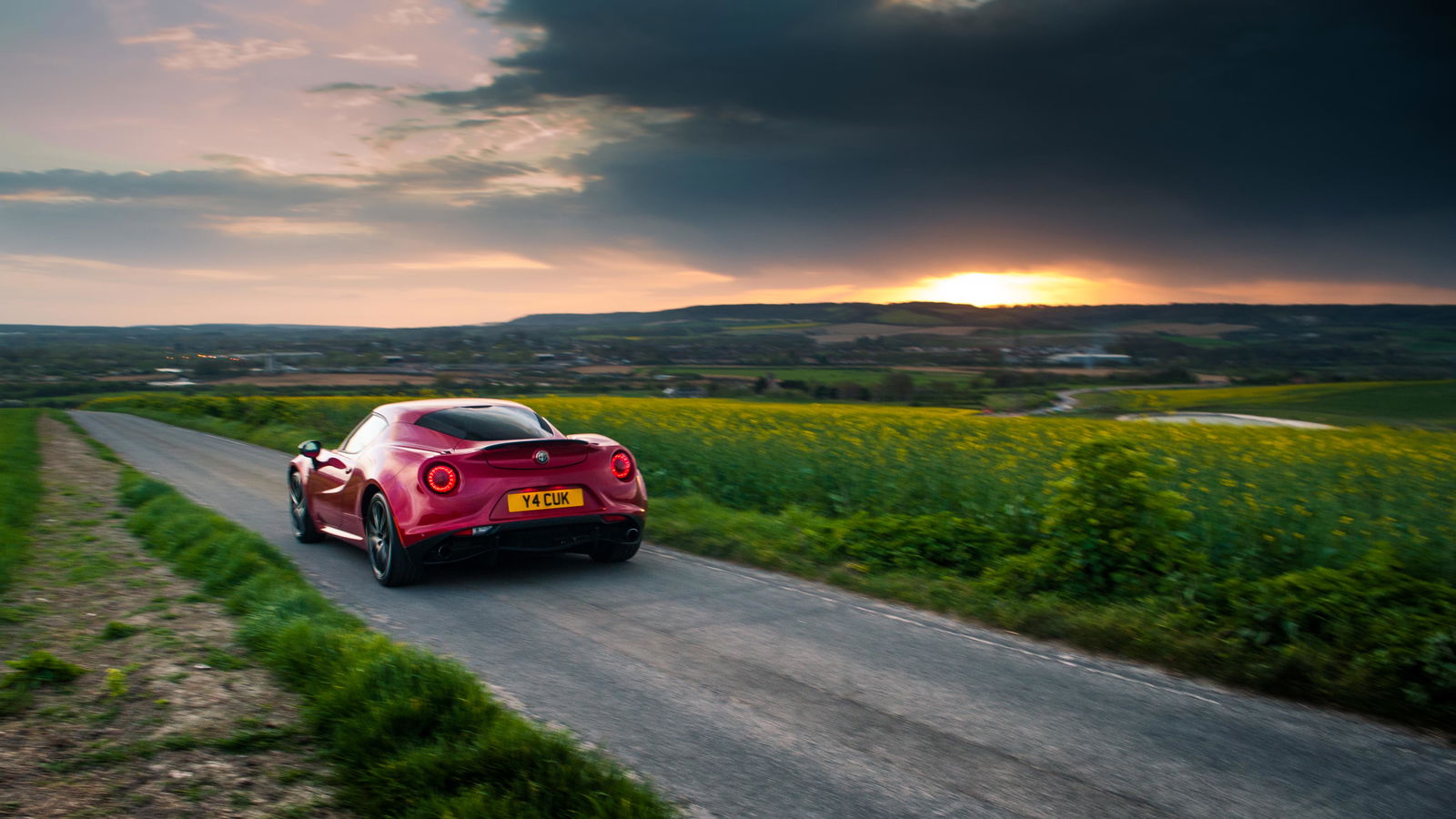
And so I must return to my earlier statement that the 4C and Cayman should not be compared - directly, at least. The trap that’s easy to fall into is assuming that everyone who’s in the market for a particular car wants the same thing. And just because the vast majority of customers want one thing, doesn’t mean a car is wrong to target the minority - you can either clamour for a slice of the big pie, or keep the small pie all to yourself.
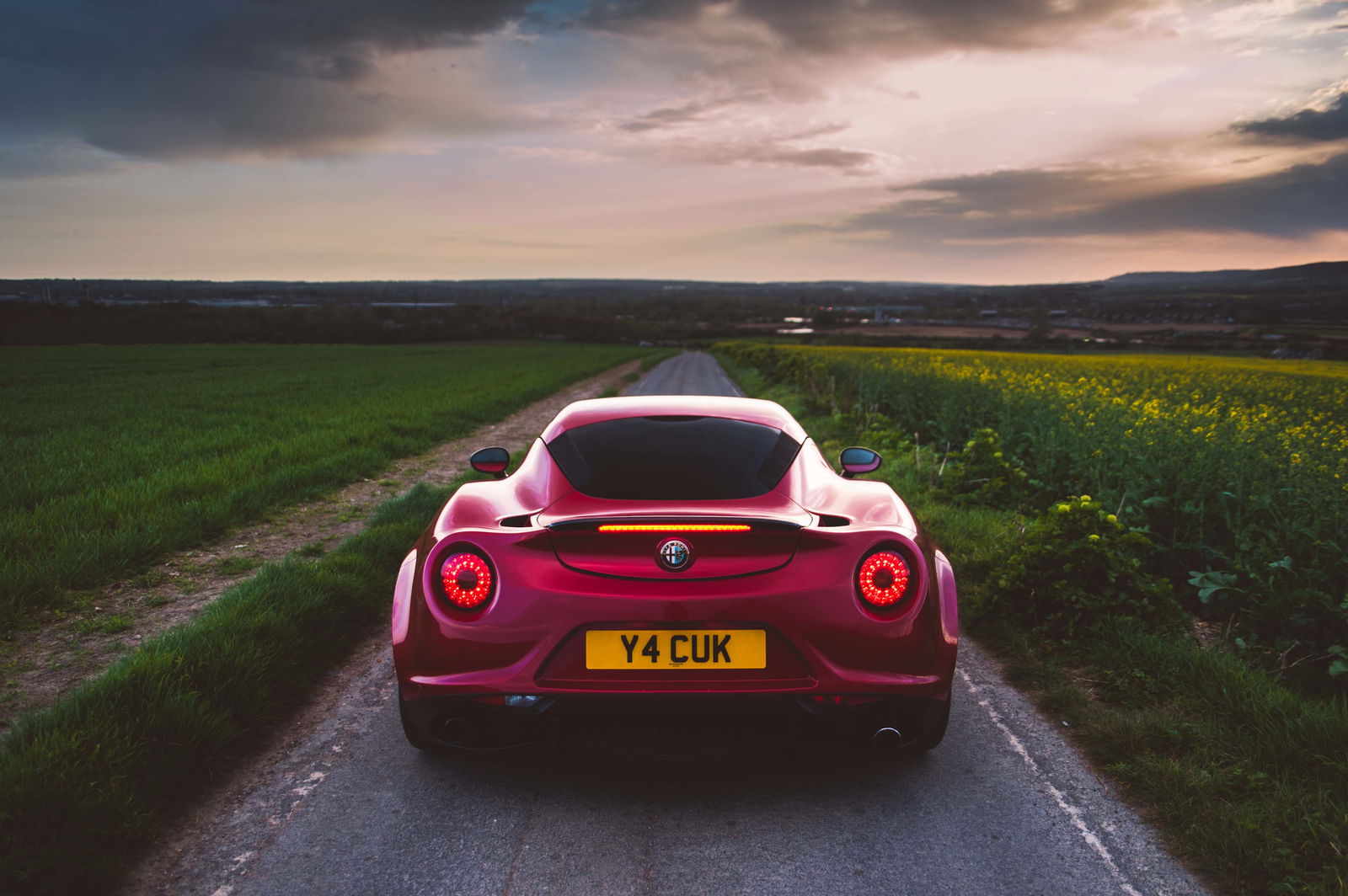
For years now, if you wanted a fast sports car, your only real option was the Cayman. Pretty much every other competitor that has gone up against it has been about track times and everyday usability and has struggled to topple the German from its perch atop the podium. The Italians have come in and ignored the podium altogether, instead skipping about spraying champagne over the scantily-clad women politely clapping the Porsche.
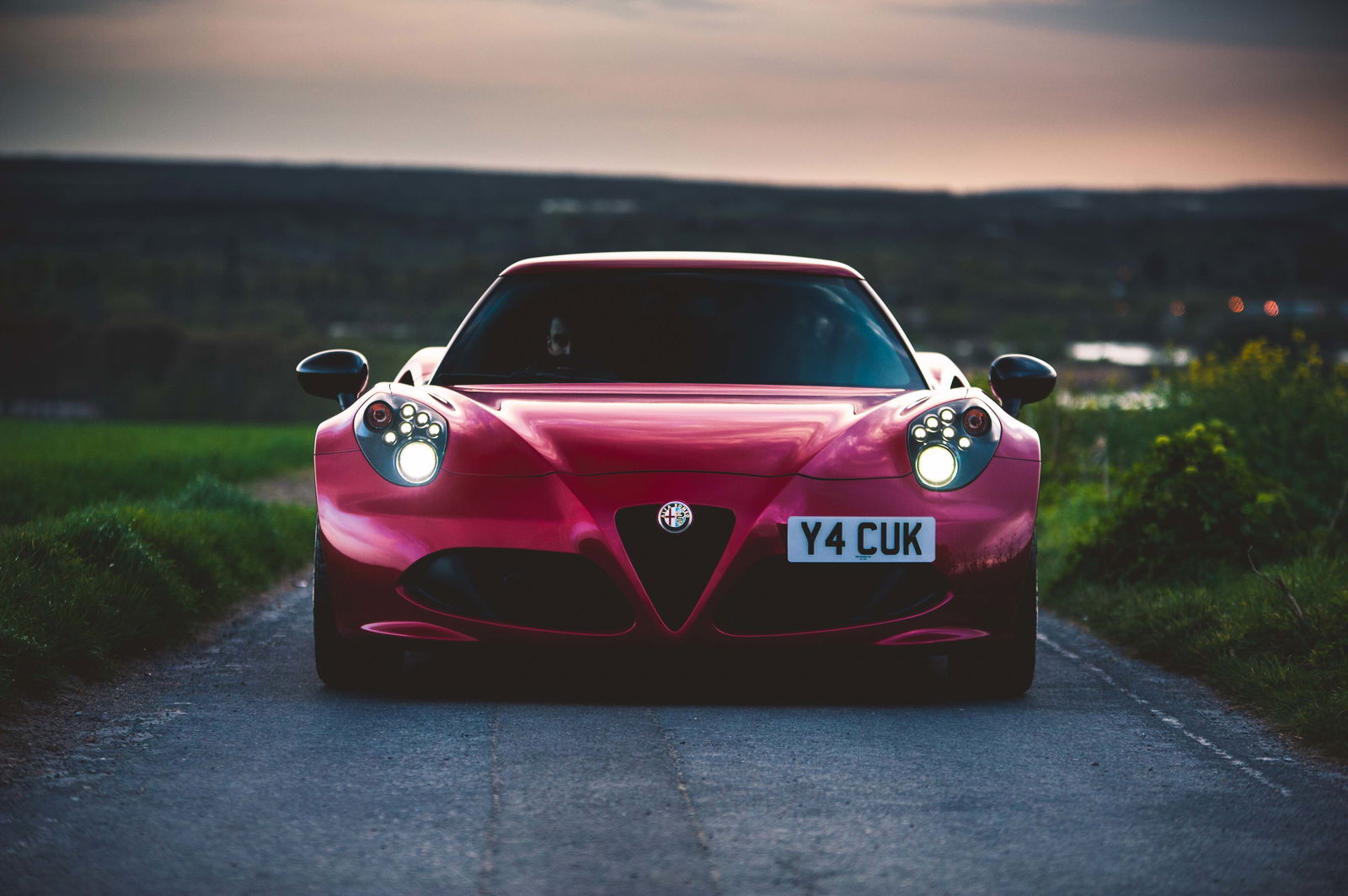
The 4C is marketed at people who don’t care about using their car daily; people who enjoy skydiving and unprotected sex. I walk through the centre of London every day and I see Porsches everywhere. They’re daily drivers with impressive performance - that’s cool, but it’s not special.
You would never daily the Alfa, and that’s what makes it so fantastic. It’s a car that makes a bonkers noise, makes everyone who sees it happy, and makes no apologies for the fact it needs to be mastered. It demands more of you every time you drive it, and that’s why you’ll keep coming back.
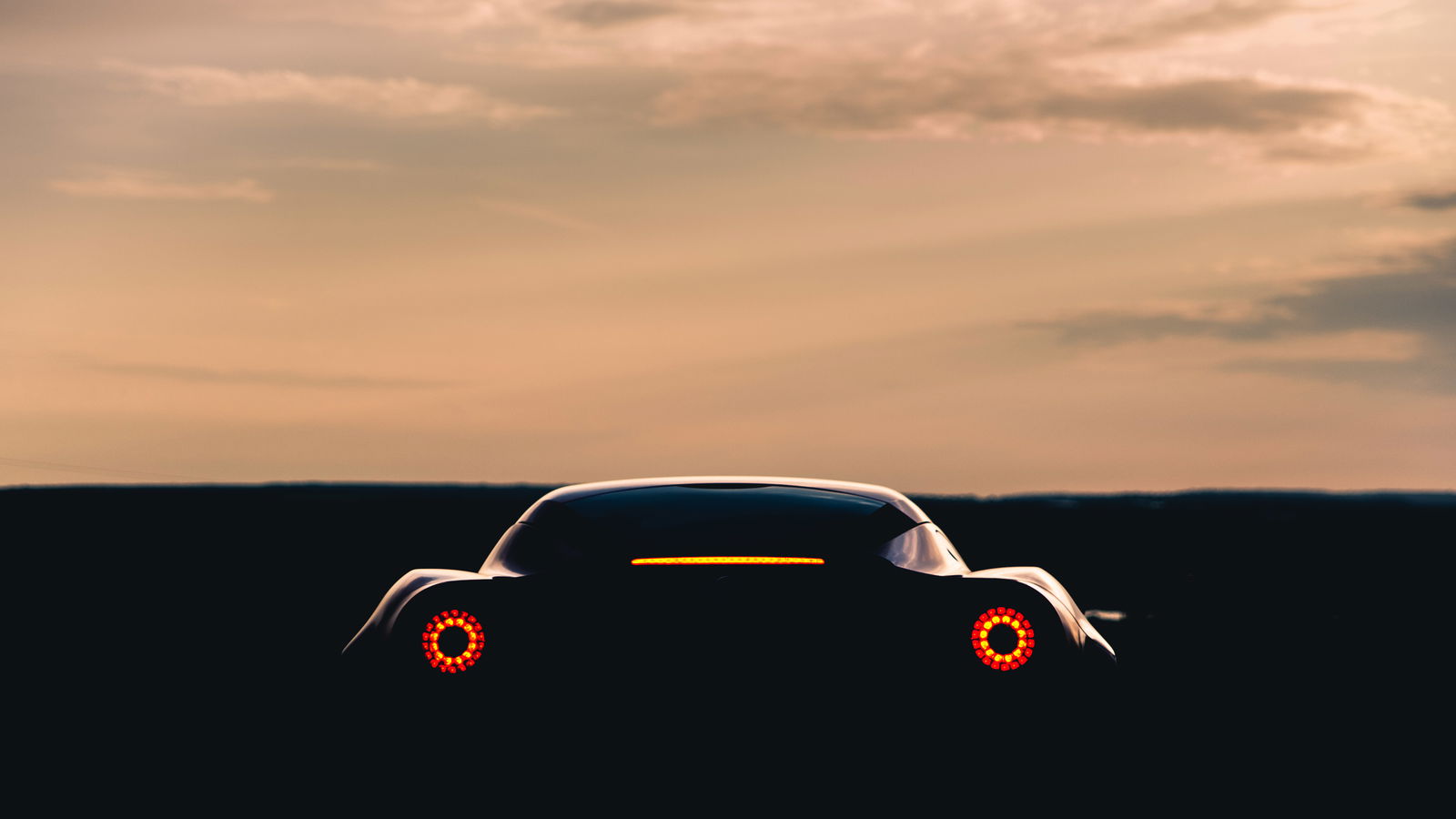
At about £45,000, it’s a ridiculously expensive weekend toy, and there will be times when its limitations frustrate you. But after a long week at work you can climb out of your comfortable beige wagon and walk towards a voluptuous Italian, drop into the carbonfibre cabin and scoot along with induction noise attacking your senses and uninterrupted steering conversing with your wrists. If that’s not enough to stir your soul, you’re welcome to the Cayman. I’ll be in the Alfa.
Comments